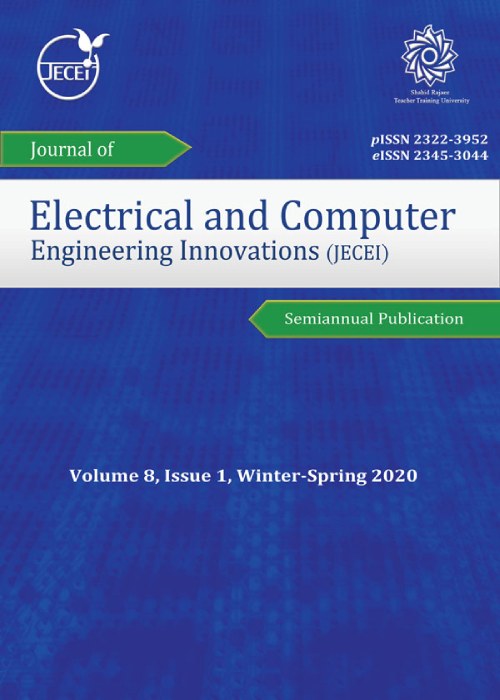A Novel Full-duplex Relay Selection and Resource Management in Cooperative SWIPT NOMA Networks
Author(s):
Article Type:
Research/Original Article (دارای رتبه معتبر)
Abstract:
Background and Objectives
Non-orthogonal multiple access (NOMA) is a promising solution to meet a high data rate demand in the new generation of cellular networks. Moreover, simultaneous wireless information and power transfer (SWIPT) was introduced to enhance the performance in terms of energy efficiency. In this paper, a single-cell cooperative NOMA system with energy harvesting full-duplex (FD) relaying is proposed to improve the sum rate and energy efficiency. Methods
A downlink model consisting of a base station (BS), two cell-center users (nearly located users), and two cell-edge users (far located users) are considered. In each signalling interval, the BS transmits a superposition signal of cell-center and cell-edge users based on the power domain (PD) NOMA strategy. Employing a relay selection criterion, a cell-center user is paired with a cell-edge user and acts as an FD decode and forward (DF) relay to improve the cell-edge user performance. An energy harvesting (EH) model is considered where a power splitting (PS) protocol is adopted at the relay node. The other cell-center user saves the harvested energy from the BS to exploit in the subsequent signalling intervals. Two problems of power allocation for sum rate and energy efficiency maximization in constraints of the minimum required data rate for each user and maximum transmit power at the BS are formulated for the proposed scheme. Due to the non-convexity, the optimization problems are transformed and approximated to the convex optimization problems and solved by iterative algorithms. Difference of convex (DC) programming is employed for solving the sum rate maximization problem where an effective combination of DC programming, bisection method, and Dinkelbach algorithm is utilized for dealing with the energy efficiency maximization problem. Results
The sum rate and energy efficiency over maximum available power at the BS are presented. Also, the effects of the power splitting factor and the cell radius on the sum rate and energy efficiency are investigated. Moreover, a comparison with the OMA and NOMA schemes is studied for the different minimum required data rates. Conclusion
Simulation results validate that the proposed scheme outperforms the OMA and NOMA schemes in terms of sum rate in all SNR regimes. Moreover, the energy efficiency of the proposed scheme achieves considerably better performance than OMA for all SNR values and obtains remarkable better performance than NOMA in most SNR values.Keywords:
Language:
English
Published:
Journal of Electrical and Computer Engineering Innovations, Volume:11 Issue: 1, Winter-Spring 2023
Pages:
161 to 172
magiran.com/p2506124
دانلود و مطالعه متن این مقاله با یکی از روشهای زیر امکان پذیر است:
اشتراک شخصی
با عضویت و پرداخت آنلاین حق اشتراک یکساله به مبلغ 1,390,000ريال میتوانید 70 عنوان مطلب دانلود کنید!
اشتراک سازمانی
به کتابخانه دانشگاه یا محل کار خود پیشنهاد کنید تا اشتراک سازمانی این پایگاه را برای دسترسی نامحدود همه کاربران به متن مطالب تهیه نمایند!
توجه!
- حق عضویت دریافتی صرف حمایت از نشریات عضو و نگهداری، تکمیل و توسعه مگیران میشود.
- پرداخت حق اشتراک و دانلود مقالات اجازه بازنشر آن در سایر رسانههای چاپی و دیجیتال را به کاربر نمیدهد.
In order to view content subscription is required
Personal subscription
Subscribe magiran.com for 70 € euros via PayPal and download 70 articles during a year.
Organization subscription
Please contact us to subscribe your university or library for unlimited access!


